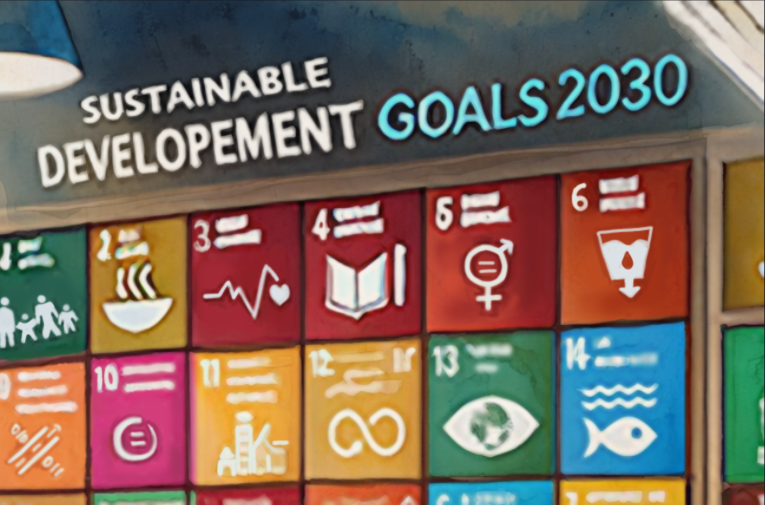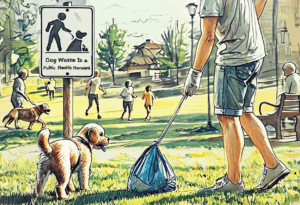
Cris Toffolo is a previous Justice Studies professor and currently the Director of the Office of International Programs at Northeastern Illinois University (NEIU). As NEIU is currently undergoing a once in a decade strategic planning, which will determine the course of classes and campus life in the coming years, Dr. Toffolo is hopeful the curriculum can grow to include—and mandate—courses or a certain amount of time spent in classes to teach the United Nations’ Sustainable Development Goals (SDGs).
Since 2015, all member nations of the United Nations—which is comprised of 193 countries—agreed to realize 17 standards of living over a certain amount of time. For most of these SDGs, the timeline is set for 2030. Additionally, there are specific targets—a total of 69—to be met for each of the goals, and even more specific indicators—a total of 232—to measure if the targets have been met.
“One of the things that I really try to punch home is, governments all verbally made a commitment to these right[s],” Dr. Toffolo said, “but is the political will there to follow through on it?”
As almost a month has passed into another new year, time continues running shorter. It’s possible multiple of these goals might not be achieved by the UN’s set target year(s).
It’s possible that if all is left up to the government, there might not be enough progress or pressure to work towards these goals in a timely manner at all. It follows that the government cannot be the only force at work. “Once they’ve publicly made a commitment, then it’s up to us as citizens to hold them to it,” Dr. Toffolo said. And part of what that could look like is educating students.
“If we were to teach in a way that students could see us trying to advance those [goals], it would maybe engender hope, because everybody agreed that the planet needs to go in this direction.” Dr. Toffolo continued, “If I can put in my little bit—none of us can do it alone—and you can put in your little bit, then all of a sudden we have a great big pile of stuff that’s going in the right direction.”
The “great big pile of stuff” is not something to be daunted by either. In fact, Dr. Toffolo’s mission to reframe education actually involves the “new” proposed curriculum overlapping with the current one. “It’s not like the faculty are going to have to do tons and tons and tons of work to change the curriculum. It’s more a question of framing.”
Instead of redesigning the curriculum, both teachers and students could embrace tweaks here and there. This can be as easy as being more aware of the university’s own history with regards to its relationship to its immediate natural environment.
The very property which is now NEIU used to be a reformatory school during World War II; those subjected to be schooled helped grow a victory garden of vegetables, which helped feed local neighbors. NEIU’s Student Food Pantry, which is still running today, stemmed from that initiative. Of this, Dr. Toffolo said, “we didn’t even know it. Like, we already have this organic connection to food in this space.”
Dr. Toffolo was also not short of ideas for extracurriculars. “There’s UN days for all different kinds of things. We could start noting those on the [university] calendar and having clubs or whoever do events. Or when we do Black History Month or Women’s History Month, we could have a day focused on the theme of gender equality, who in the world is working on this [UN SDG], and all the ways that they’re doing it. It doesn’t take away from Women’s History Month, it just adds a new activity.”
The ultimate goal is for all of this to make long-term impacts on all parties involved. “If we put up solar panels and we educate students, maybe [they’re] more likely to put a green roof or a solar panel on [their] house, and that spreads the influence. That’s modeling sustainable practices. We have to think about it long term.”
Dr. Toffolo has also been thinking about how the effectiveness and impact of SDG-teaching in the classroom can be evaluated; course evaluations can be tweaked to ask students for reflections, for example. Another way could be for faculty to get more research money if they implement strategic development goals. Something Dr. Toffolo plans to do in her department is to ask how students’ study abroad trips are going to advance the strategic development goals before approving them.
She noted that other schools have already been modeling sustainable practices. “There are 235 million university students. There’s a push right now to say governments aren’t living up to their obligation. What civil society organizations can help keep us on track? Ah, universities … there’s thousands of universities who are signing up to do this around the world and in the United States too.”
While Dr. Toffolo is advocating for the SDGs to be taught in NEIU’s curriculums in the near future, which includes giving presentations to multiple departments and raising awareness about her vision, students at NEIU—and from colleges all over the world—have no need to sit idle; they can also follow her lead to take action in their schools and beyond.
The views and opinions expressed are those of the authors and do not necessarily reflect nor represent the Earth Chronicles and its editorial board.




